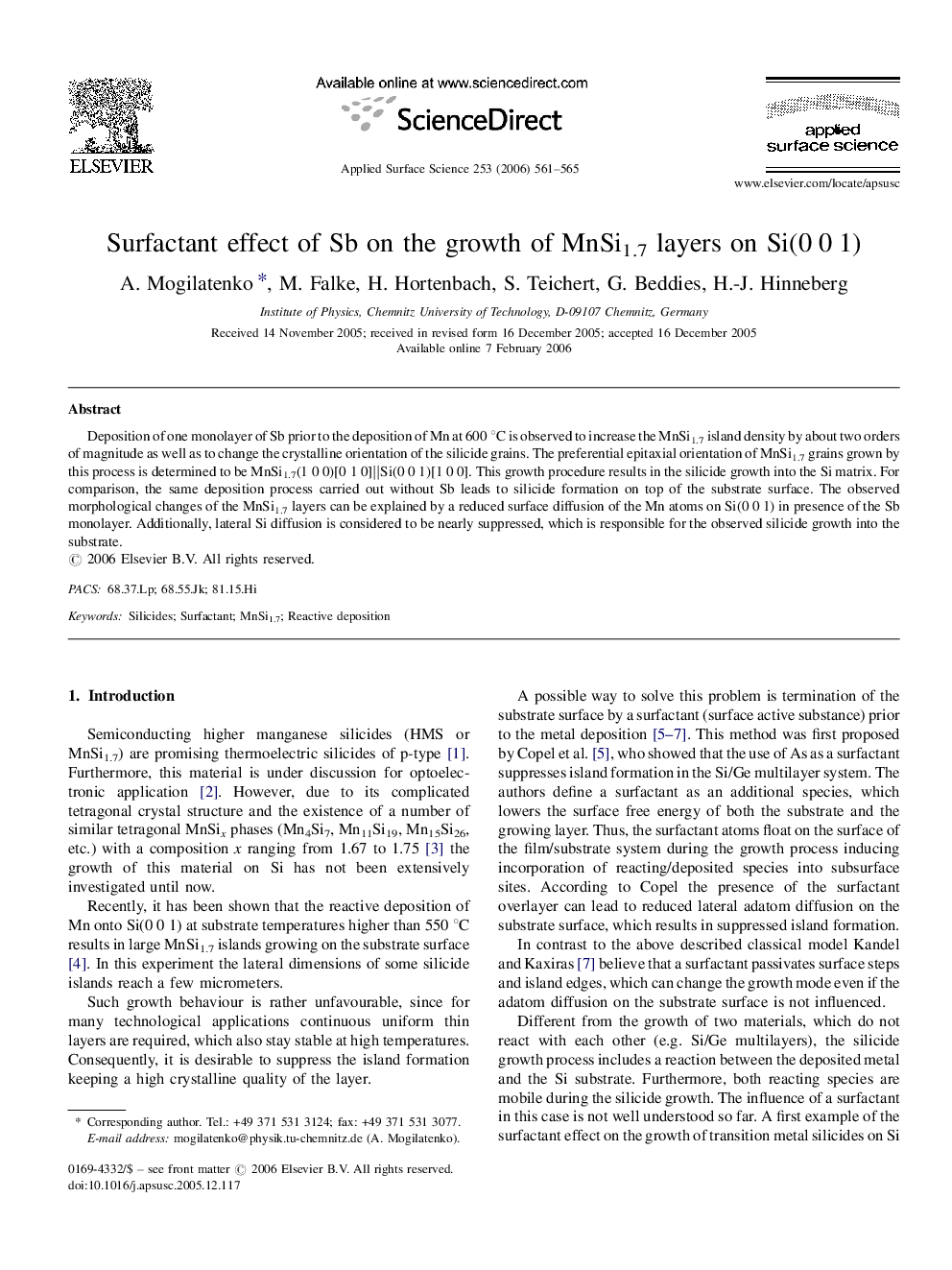| Article ID | Journal | Published Year | Pages | File Type |
|---|---|---|---|---|
| 5370235 | Applied Surface Science | 2006 | 5 Pages |
Deposition of one monolayer of Sb prior to the deposition of Mn at 600 °C is observed to increase the MnSi1.7 island density by about two orders of magnitude as well as to change the crystalline orientation of the silicide grains. The preferential epitaxial orientation of MnSi1.7 grains grown by this process is determined to be MnSi1.7(1 0 0)[0 1 0]||Si(0 0 1)[1 0 0]. This growth procedure results in the silicide growth into the Si matrix. For comparison, the same deposition process carried out without Sb leads to silicide formation on top of the substrate surface. The observed morphological changes of the MnSi1.7 layers can be explained by a reduced surface diffusion of the Mn atoms on Si(0 0 1) in presence of the Sb monolayer. Additionally, lateral Si diffusion is considered to be nearly suppressed, which is responsible for the observed silicide growth into the substrate.
